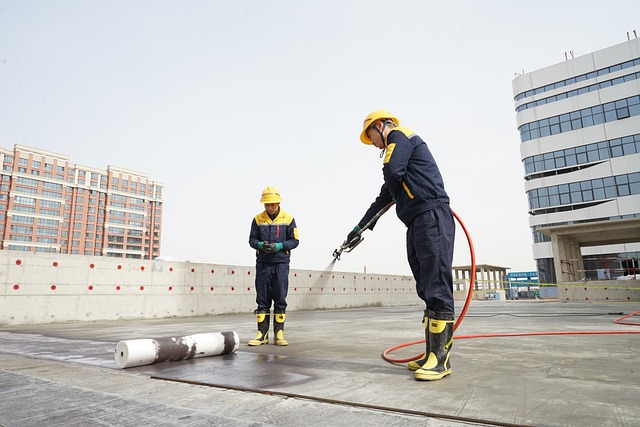Types of Waterproofing in Construction & How to Choose the Right Service

Strong 8k brings an ultra-HD IPTV experience to your living room and your pocket.
Waterproofing is a critical aspect of construction, ensuring the longevity and durability of buildings by protecting them from water damage. Different types of waterproofing systems are available, each suited for specific applications and conditions. Understanding these options is essential for making informed decisions and selecting the right Waterproofing Services.
Why Waterproofing is Essential in Construction
Water damage can lead to a host of problems in buildings, including structural deterioration, mold growth and compromised indoor air quality. Effective waterproofing prevents these issues by creating a barrier that keeps water out. This is especially important in areas prone to heavy rainfall, high humidity, or fluctuating temperatures. Proper waterproofing not only preserves the structural integrity of the building but also enhances the health and comfort of its occupants. Understanding the Types of Waterproofing in Construction is crucial for selecting the right method to protect your property from water-related damage.
Types of Waterproofing Methods
Cementitious Waterproofing
Cementitious waterproofing is one of the most common and cost-effective methods used in construction. It involves applying a cement-based coating to concrete or masonry surfaces. This type of waterproofing is suitable for internal wet areas such as bathrooms, kitchens, and balconies. It's easy to apply but has limited flexibility, making it prone to cracking in areas with movement or vibration.
Liquid Membrane Waterproofing
Liquid membrane waterproofing involves applying a thin coating of polymer-modified asphalt or polyurethane to surfaces. This creates a seamless, flexible barrier that can accommodate movement and bridge small cracks. Liquid membranes are suitable for a variety of applications, including roofs, decks, and below-grade walls. They offer excellent adhesion and durability, making them a popular choice for both residential and commercial buildings.
Bituminous Membrane Waterproofing
Bituminous membrane waterproofing is a method commonly used for low-sloped or flat roofs. It involves applying layers of bitumen (asphalt) to create a waterproof barrier. The bitumen is often reinforced with fiberglass or polyester for added strength and durability. Bituminous membranes are highly resistant to water penetration and can withstand extreme temperatures.
Polyurethane Waterproofing
Polyurethane waterproofing is a high-performance system that offers excellent flexibility, durability, and chemical resistance. It involves applying a liquid polyurethane coating to surfaces, which then cures to form a seamless, waterproof membrane. Polyurethane waterproofing is suitable for a wide range of applications, including roofs, decks, parking structures, and industrial facilities. It can withstand heavy traffic and exposure to harsh chemicals, making it a popular choice for demanding environments.
Epoxy Waterproofing
Epoxy waterproofing is commonly used for industrial and commercial applications where chemical resistance is a primary concern. It involves applying an epoxy coating to surfaces, which then cures to form a hard, durable, and waterproof barrier. Epoxy waterproofing is resistant to a wide range of chemicals, including acids, alkalis, and solvents. It's often used in laboratories, manufacturing plants, and wastewater treatment facilities. Epoxies are vulnerable to UV radiation and hence in areas exposed to sunlight, a UV protection coating is desirable
EPDM Rubber Membrane Waterproofing
EPDM (ethylene propylene diene monomer) rubber membrane waterproofing is a durable and flexible option for flat or low-sloped roofs. EPDM membranes are made from synthetic rubber and offer excellent resistance to weathering, UV radiation, and ozone. They are typically installed using adhesives or mechanical fasteners, creating a long-lasting, waterproof barrier.
PVC Waterproofing Membrane
PVC (polyvinyl chloride) waterproofing membranes are commonly used for roofing, below-ground waterproofing, and other applications where durability and chemical resistance are required. PVC membranes are thermoplastic and can be heat-welded to create a seamless, watertight barrier. They offer excellent resistance to punctures, tears, and chemical degradation.
How to Choose the Right Waterproofing Service
Selecting the right Waterproofing Service is crucial for ensuring the long-term performance of your waterproofing system. Here are some factors to consider when choosing a Waterproofing Service provider:
Experience and Expertise
Choose a Waterproofing Service provider with a proven track record and extensive experience in the industry. Look for a company that has completed similar projects and has a team of skilled and certified applicators.
Range of Services
Select a Waterproofing Service provider who offers a comprehensive range of services, including inspection, diagnosis, design, installation, and maintenance. This ensures that they can handle all aspects of your waterproofing project.
Quality of Materials
Inquire about the quality of materials used by the Waterproofing Service provider. Make sure they use high-quality waterproofing products from reputable manufacturers.
Warranty
Choose a Waterproofing Service provider that offers a warranty on their workmanship and materials. This provides assurance that they stand behind their work and will address any issues that may arise after installation.
Cost
Obtain quotes from multiple Waterproofing Service providers and compare their prices. However, don't base your decision solely on cost. Consider the value, experience, and reputation of the provider.
References and Reviews
Check references and read online reviews to get a sense of the Waterproofing Service provider's reputation and customer satisfaction.
Conclusion
Waterproofing is an essential investment for the longevity and durability of any building. By understanding the different types of waterproofing methods and choosing the right Waterproofing Service provider, you can ensure that your property is protected from water damage for years to come. Don't wait until you have a problem – take proactive steps to waterproof your building and safeguard your investment.
Note: IndiBlogHub features both user-submitted and editorial content. We do not verify third-party contributions. Read our Disclaimer and Privacy Policyfor details.








